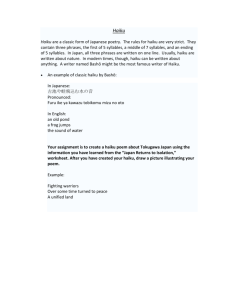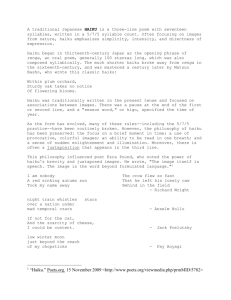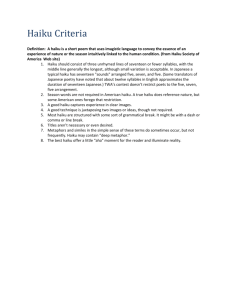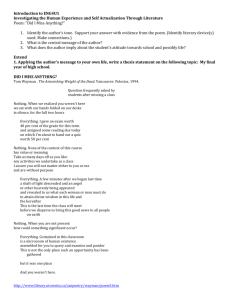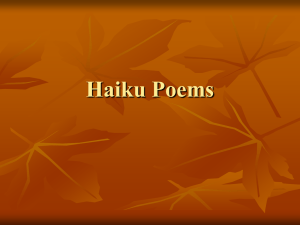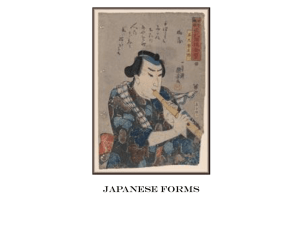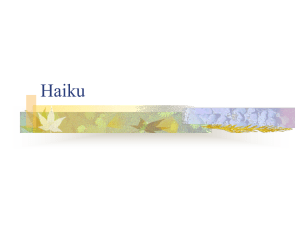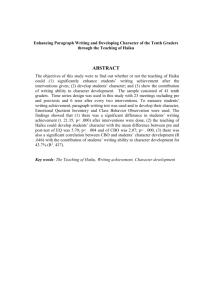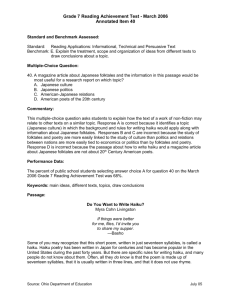Haiku art - Geneva 304
advertisement
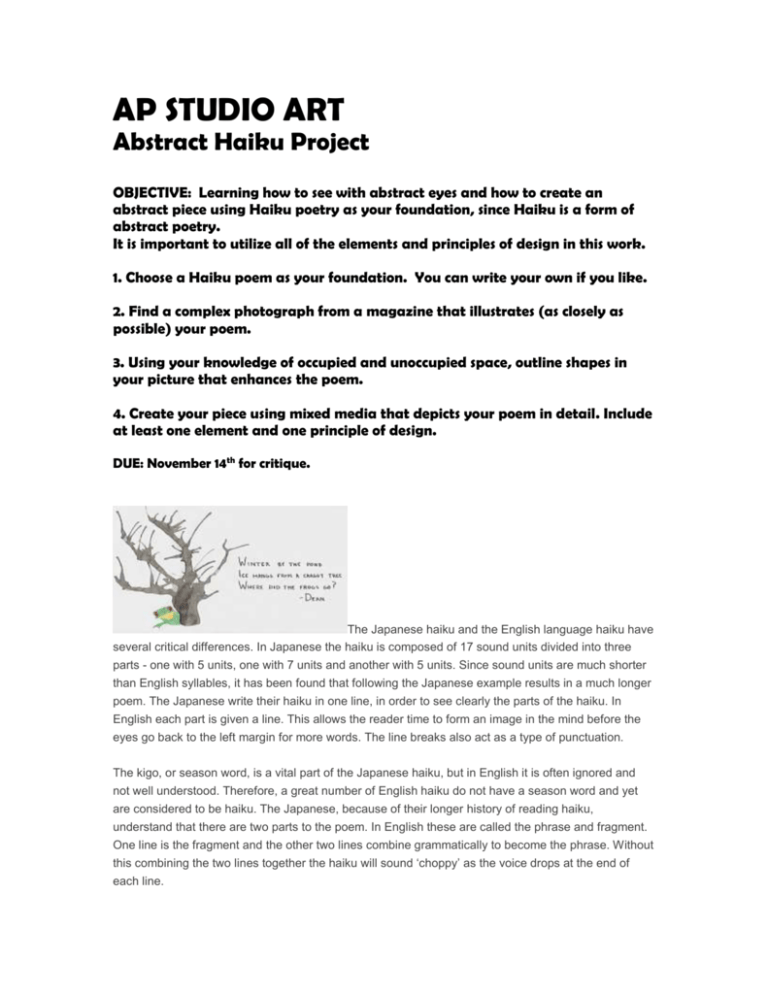
AP STUDIO ART Abstract Haiku Project OBJECTIVE: Learning how to see with abstract eyes and how to create an abstract piece using Haiku poetry as your foundation, since Haiku is a form of abstract poetry. It is important to utilize all of the elements and principles of design in this work. 1. Choose a Haiku poem as your foundation. You can write your own if you like. 2. Find a complex photograph from a magazine that illustrates (as closely as possible) your poem. 3. Using your knowledge of occupied and unoccupied space, outline shapes in your picture that enhances the poem. 4. Create your piece using mixed media that depicts your poem in detail. Include at least one element and one principle of design. DUE: November 14th for critique. The Japanese haiku and the English language haiku have several critical differences. In Japanese the haiku is composed of 17 sound units divided into three parts - one with 5 units, one with 7 units and another with 5 units. Since sound units are much shorter than English syllables, it has been found that following the Japanese example results in a much longer poem. The Japanese write their haiku in one line, in order to see clearly the parts of the haiku. In English each part is given a line. This allows the reader time to form an image in the mind before the eyes go back to the left margin for more words. The line breaks also act as a type of punctuation. The kigo, or season word, is a vital part of the Japanese haiku, but in English it is often ignored and not well understood. Therefore, a great number of English haiku do not have a season word and yet are considered to be haiku. The Japanese, because of their longer history of reading haiku, understand that there are two parts to the poem. In English these are called the phrase and fragment. One line is the fragment and the other two lines combine grammatically to become the phrase. Without this combining the two lines together the haiku will sound ‘choppy’ as the voice drops at the end of each line.
